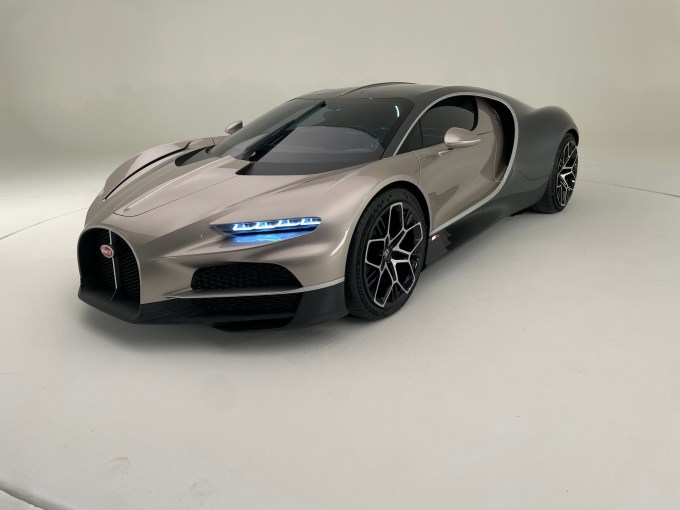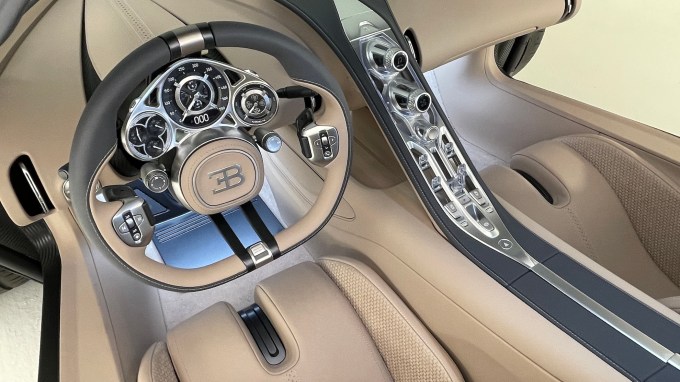Welcome back to TechCrunch Mobility – your central hub for news and information on the future of transport. Sign up here for free – just click TechCrunch Mobility!
Am I the only one feeling dizzy from all the trans news this week? Reminder, it’s only Thursday morning. Let’s get to it!
Oh wait, before we do that, a housekeeping point: we won’t have a newsletter next week due to the July 4th holiday. See you on July 11th!
A small bird

A little bird reached out its hand to let us know that Cruise Cruise recently laid off 35 employees. Cruise confirmed the cuts and added some important context. These are routine layoffs, not layoffs, which are typically done for financial reasons. And yes, we know this is a small reduction (just 1% of their workforce) compared to the 24% layoffs they did late last year. Still, we’re paying attention to everything that’s happening at Cruise.
Cruise also announced a reorganization of its workforce that will place the company’s security functions under Chief Security Officer Steve Kenner and integrate two teams (customer success and remote support). This reorganization is part of the company’s continued investment in security, according to the company.
Do you have any advice to give us? Email Kirsten Korosec at kirsten.korosec@techcrunch.com, Sean O’Kane at sean.okane@techcrunch.com, or Rebecca Bellan at rebecca.bellan@techcrunch.com. Or see these instructions for how to contact us via encrypted messaging apps or SecureDrop.
Offers!

I will put the Rivian–Volkswagen Group I’m in the category of things I didn’t expect in 2024. It’s a huge and curious affair too.
Here’s what we know so far. The deal is supposed to give VW access to Rivian’s existing electric architecture and software platform. Meanwhile, Rivian will benefit from some of VW’s cash and manufacturing expertise that would likely help the electric vehicle company cut costs.
This deal could bring $5 billion into Rivian’s coffers. But initially, VW Group will invest $1 billion in Rivian via an unsecured convertible bond that will be converted into Rivian common stock once certain regulatory approvals are received. This is expected to happen in the fourth quarter of this year. VW Group will then purchase an additional $1 billion worth of Rivian common stock in 2025 and 2026. The remaining $2 billion will go to the joint venture, split between an initial investment and a loan in 2026.
The joint venture will be a 50-50 partnership with co-CEOs reporting to both Rivian and the Volkswagen Group. Rivian will share its electrical architecture expertise with VW and is expected to license existing intellectual property rights to the joint venture.
There’s still so much to learn here, so stay tuned as we report this story.
Other offers that caught my attention…
Etheric fuelsan e-fuel startup working on aviation and shipping fuel production, raised $30.4 million of a $34.3 million seed round, according to a public filing.
Bit Detectiona South Korea-based startup developing a 4D imaging radar, raised $25 million in a Series B funding round.
Collector, a startup founded in 2019 that provides infrastructure for dynamic pricing systems used by airlines, raised $90 million in a Series B funding round led by Battery Ventures.
Canthe food delivery startup, to undergo a restructuring that includes the investment of $250 million by Abu Dhabi investment fund Mubadala Investment Company in the company and the acquisition of majority control of its operations Turkish grocery stores, the Financial Times reported.
SkyCella Swiss startup that developed hardware and software to transport pharmaceuticals, raised $116 million in a Series D funding round. SkyCell is now valued at $635 million, the company told TechCrunch.
Wisk Aero, a subsidiary of Boeing, has acquired Verocel, a software verification and validation company serving the aerospace industry for 25 years. Terms were not disclosed.
Notable readings and other interesting information

Autonomous vehicles
If I were a betting woman, I could bet that Cruise The moped will be back on the streets of San Francisco by the end of 2024. Why? Some developments are beginning to point in this direction.
For one thing, Cruise agreed to pay a $112,500 fine to California regulators for failing to provide complete information about an accident involving one of its robo-taxis last year. And he also named Marc Whittena video game veteran who was most recently CTO at Unity, as CEO.
Project 3 Mobilitythe Croatian autonomous vehicle start-up from Rimac Groupannounced a new name, Verne — as in Jules Verne — and some details about the company. Verne was founded by Mate Rimac and two close friends of the Rimac Group, Marko Pejković, now CEO of Verne, and Adriano Mudri, designer of Nevera and design director at Verne. The plan is to launch a two-seater autonomous electric vehicle designed for urban environments and equipped with Mobileye technology by 2026, starting in Zagreb, Croatia, where the Rimac Group is based.
Uber Freight And Aurora Innovation announced a multi-year collaboration that will see Aurora’s self-driving technology offered on the Uber Freight network through 2030. Read on to learn more about the ins and outs of this deal.
Waymo has eliminated the waiting list for its robotaxis service in San Francisco, giving anyone the opportunity to download the app and immediately call one of its robotaxis in San Francisco. Nearly 300,000 people have signed up for the waiting list since last year.
Electric vehicles, charging and batteries
Bankruptcy proceedings for Fisker The 2018 results are shaping up to be as eventful as the EV startup’s. One of the most surprising admissions is that Fisker appears to have been facing “potential financial distress” as early as last August. That’s the same month Fisker held a “Product Vision Day” event to promote several new models it’s working on, including a low-cost EV and an electric pickup truck.
Meanwhile, a legal battle is already underway over Fisker’s assets, with one lawyer claiming the startup liquidated assets “outside court supervision.” The problem is the relationship between Fisker and its largest secured lender, Capital management of heightsa subsidiary of financial services company Susquehanna International Group.
Software, applications and embedded technologies
CDK, which makes customer management software that helps auto dealerships and workshops manage their customer and vehicle records, is still repairing the damage from back-to-back cyberattacks. The problem is wreaking havoc on the 15,000 U.S. auto dealerships and workshops that rely on the company’s software. The company says it will take “several days” to resolve the issue.
Stellantis AI chief Berta Rodriguez-Hervas has left the automaker, Automotive News reported.
This week’s wheels

I haven’t had a chance to drive this particular vehicle, but wow, I have to share what I saw up close. I’m talking about Bugatti Tourbillonthe successor to the Bugatti Chiron and the first vehicle to be released since the merger with Rimac.
The Bugatti Tourbillon is special for many reasons, not just its base price of €3.8 million or the fact that only 250 units will be produced. I would say that this Bugatti perfectly embodies what luxury will look like in the digital age of the future.
There are no giant screens inside, a modern detail that seems to be a requirement in every new car these days. Instead, the cornerstone of the sumptuous interior is the instrument cluster, which was designed and built with the help of Swiss watchmakers. The instrument cluster, which contains more than 600 parts and includes precious stones like sapphire and ruby, is fixed as the steering wheel turns around it.

Then there’s the drivetrain. Bugatti ditched its popular quad-turbo 8.0 W16 and instead created a naturally aspirated V16 and an electric powertrain with three electric motors. The vehicle packs a 25-kilowatt-hour battery pack that provides a range of about 60 to 70 kilometers (37 to 43 miles). Rimac Group founder and CEO Mate Rimac noted that this is “a decent all-electric range if you need it, especially to future-proof the car, in case in some areas you can’t drive with a combustion engine at all.”
So forget about screens and apps. You won’t find them here. Instead, innovation and technology are more like art.